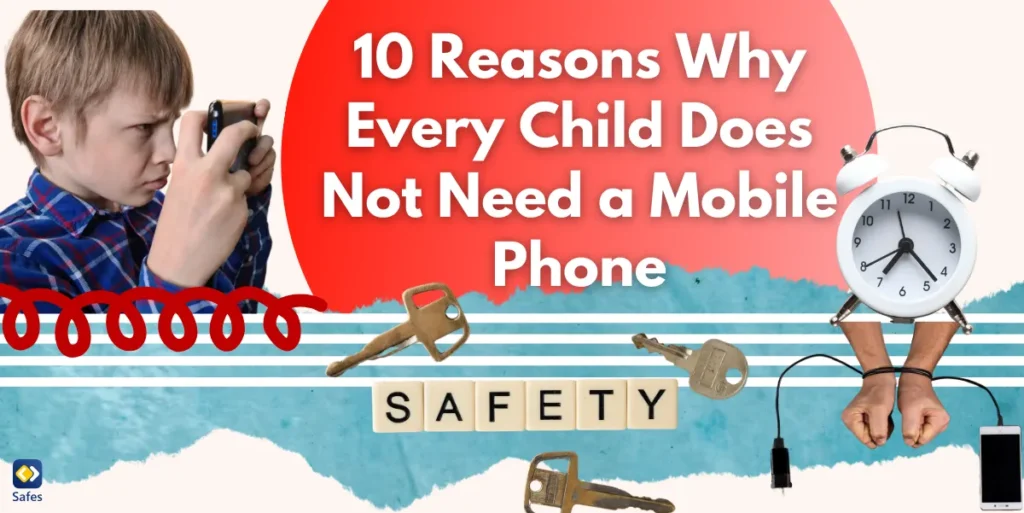If you’ve ever overheard your child say something like “That’s sus” and felt completely lost, you’re not alone. Slang evolves fast, and sus is one of those words that jumped from video games to everyday conversations almost overnight. In this blog, we’ll break down the meaning of “sus” in slang and where it came from, especially its ties to the popular game Among Us. You’ll see real-life examples of how kids use it in texts, social media, and gaming and we’ll help you understand when it’s all in good fun and when it might signal something more serious. Plus, we’ll cover safety tips, parental control tools, and how to keep open communication with your child in a digital world full of new trends.
Download and Start Your Free Trial of the Safes Parental Control App
What Does Sus Mean in Text Slang?
“Sus” is a shortened form of the word “suspicious” or “suspect.” In text slang, it’s used to describe someone or something that seems shady, untrustworthy, or just a little off. For example, if a teenager says, “He’s acting kinda sus,” they likely mean the person is behaving in a way that raises suspicion. This slang became especially popular through the online game Among Us, where players would call others “sus” when accusing them of being deceptive. Variations or similar spellings include “suss” or the full word “suspicious,” though “sus” is by far the most commonly used in casual texting and social media.
Why Do Kids Say “Sus”?
Kids started using “sus” in the game Among Us to call out players they suspected of being the Impostor—the one secretly sabotaging the crew. If someone was acting strangely or not doing tasks, others might say, “Red is sus,” meaning Red seems suspicious and could be the Impostor. That’s where the phrase “Imposter sus” comes from in slang: it points to someone who seems untrustworthy or is pretending to be something they’re not.

How It’s Used in Real Digital Interactions
Kids and teens often use “sus” in a playful, sarcastic, or teasing way to call out strange behavior or questionable actions. In a text, a teen might say, “You didn’t show up to lunch today… kinda sus,” implying their friend is acting suspicious without being too serious. On social media, you’ll see comments like “That’s sus” under videos that show unexpected or funny twists. In gaming, especially in multiplayer games like Among Us or Fortnite, players might type, “Blue is sus,” to accuse another player of being sneaky or lying. The tone is usually lighthearted, but it can also be used seriously if someone genuinely doubts someone’s honesty or intentions.
Platform-Specific Usage
On TikTok, “sus” is often used in captions or comments for comedic effect, especially when reacting to unexpected or “cringe” behavior. On Snapchat, it might appear in quick, casual messages between friends, usually with emojis to add sarcasm or flirtation. On Discord, especially in gaming communities, “sus” is used more directly during real-time chats to call out odd behavior during gameplay. On Instagram, it may show up in story replies or meme captions, typically to poke fun. Across platforms, the slang adjusts slightly to fit the vibe. Whether it’s humor, suspicion, or playful drama, the core meaning stays the same.
Risk Level Indicator (Parent Alert System)
🟡 Yellow – Context matters; can be misused.
While “sus” is mostly harmless and often used jokingly among friends or in gaming, it can sometimes take on a more negative tone depending on how it’s used. Teens might use it to spread rumors, make passive-aggressive accusations, or call someone out in a way that feels more like mocking than joking. When it becomes a repeated label in group chats or online games, especially if one person is always being called “sus,” it can lead to feelings of exclusion or embarrassment. What starts as playful teasing can sometimes cross the line into bullying, especially if the target doesn’t find it funny. Parents should be aware that even slang terms that seem innocent can carry different meanings depending on the social context and the relationships involved.
Trend Tracker: Is It Still Relevant?
As of April 2025:
📉 Fading – “Sus” became popular around 2020 when the game Among Us skyrocketed in popularity. During that time, players frequently used the word to call out others they believed were acting suspicious in the game. It quickly spread beyond gaming and became a staple in TikTok captions, text messages, and everyday teen conversations. The slang was short, catchy, and perfect for calling out odd or questionable behavior. While “sus” is still recognized and occasionally used today, many teens in 2025 view it as outdated or cringey. New slang terms like demure, rizz, and gyat have taken over in online humor, messaging, and social media trends.
![]()
Online Safety Considerations
The term “sus” is generally harmless and often used playfully, but like many slang words, it can occasionally be misused in ways that reflect teasing or exclusion. For example, calling someone “sus” repeatedly in a group chat or online game might cross into (cyber)bullying if it makes the person feel singled out. Parents can support their kids by staying tuned in, not just to the words being used, but to the tone and context. Ask open-ended questions like, “What does ‘sus’ mean to you?” or “Have you ever felt uncomfortable when someone used that word?” Encourage your child to think about how their words make others feel and help them recognize when something meant as a joke might go too far. Keeping conversations relaxed and regular helps make it easier for your child to come to you if something online ever feels off.
Do Parental Controls Help?
Yes, especially when combined with open communication. Built-in iPhone parental controls let you set screen time limits, restrict app access, and filter web content, giving you more visibility and control over what your child is exposed to. For families using both iOS and Android, a parental control app like Safes can be especially helpful. Available on both platforms, Safes lets you monitor app usage, set screen time rules, block inappropriate websites, and even get alerts for concerning activity. These tools give you a strong foundation for understanding your child’s digital habits. Pairing parental controls with ongoing conversations ensures you’re both protecting and empowering your child as they explore online spaces.
Conclusion
Slang like “sus” can seem confusing at first, but understanding its meaning and context helps parents stay connected to their kids’ digital world. While “sus” is mostly playful and fading in popularity, it’s still worth knowing how it shows up in texts, games, and social media. The best approach is to stay curious, have open conversations, and use tools like parental controls to keep an eye on your child’s online interactions. With awareness and communication, you can help your child navigate slang, trends, and internet culture with confidence and safety.
Your Child’s Online Safety Starts Here
Every parent today needs a solution to manage screen time and keep their child safe online.
Without the right tools, digital risks and excessive screen time can impact children's well-being. Safes helps parents set healthy boundaries, monitor activity, and protect kids from online dangers—all with an easy-to-use app.
Take control of your child’s digital world. Learn more about Safes or download the app to start your free trial today!




